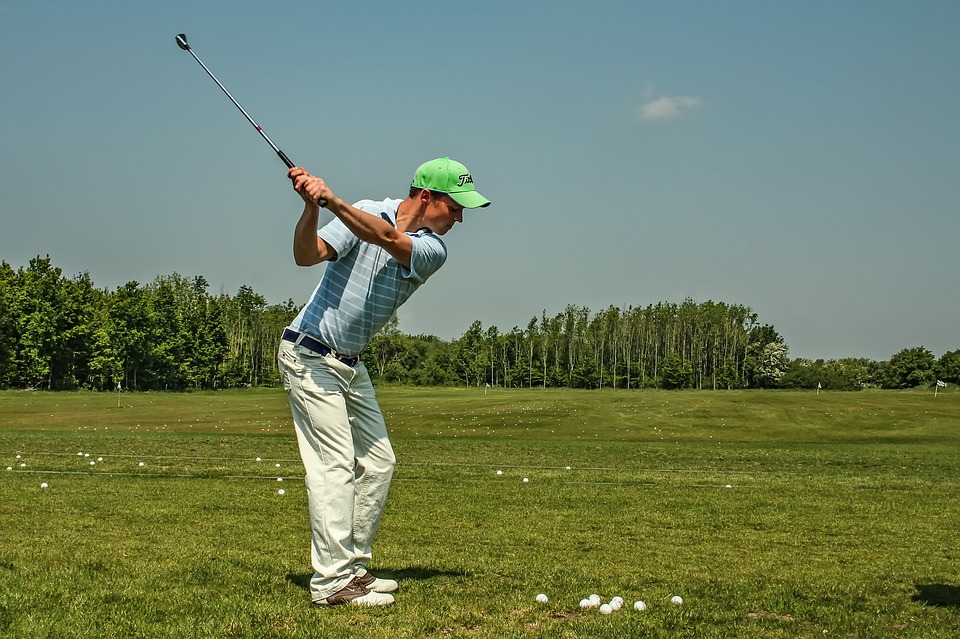5 Ways Your Swing Is Hurting Your Golf Game (And Probably Your Back Too)


With the Travelers Championship underway, you may be inspired to break out your clubs and hit the green. Golfing is a great way to enjoy the outdoors this summer, and Connecticut has no shortage of scenic courses. However, whether you’re playing for the first time or the hundredth time, your swing may be doing more harm than just adding strokes to your round. Here are five things to watch out for when teeing off this summer in order to prevent injury and optimize your game:
1. Flipping
“Flipping” is the nickname given to an early release and it can quickly derail any shot. This fatal flaw occurs at impact when your body is positioned too far over the ball. If you have a habit of flipping, it’s much harder to time your swings and will no doubt affect your game. Luckily, flipping can be corrected with the use of anti-flip drills like this one from golf instructor Andrew Rice. Breaking the habit of flipping will not only improve your game, but lower your risk of injury by correcting your posture and alignment.
2. Poor Hand Placement
While this may seem obvious to avid golfers, poor hand placement is one of the easiest ways to set your swing up for failure. Keeping your hands low allows you to control the height of the follow through, which will prevent your shots from going too high. This will ensure that you have control over your shots and improve your game in turn. Holding the club too high can also hinder the range of motion in your wrists, making it much harder to make a wrist set when you swing. To make sure your grip is just right, hold the club with your hand running diagonally underneath the heel pad through the base of the forefinger.
3. Relying on Your Arms
Just like in any other sport, a strong body is just as important as strong arms. Focusing on your body is essential to improve your balance, posture, and the quality of your shots. While swinging from your body may take practice to perfect, it will drastically improve your swing in the long run and allow you to have greater control. In order to prevent injury, it’s also crucial to release with your body by following through completely. Many golfers will stop short with the body and finish the swing with the arms, causing an overextension of the wrists that can lead to injury. By leading with the body and allowing the arms to follow naturally, the arms and body work together effectively resulting in a safer and more powerful swing.
4. Poor Elbow Position
Another factor that could be hindering your success on the green is your elbow position. For instance, if you swing with your right elbow flying out, it raises the right shoulder with it, resulting in an overly powerful downswing. Overusing your elbows goes hand in hand with relying on your arms, and a combination of these factors can ruin an otherwise perfect swing. Instead, focus on correcting your shot so that your elbow hinge is at a 90 degree angle and your arms remain in front of your chest.
5. Swinging Too Far in the Backswing
Having a solid backswing is an important factor in perfecting your swing. Swinging too far back will cause you to exert too much pressure on your arms and back in the downswing which can lead to injury. Over-swinging can also cause your chin to hit your shoulder, causing you to miss the ball. A good rule of thumb is to maintain eye contact with the ball and backswing just until you see the glimmer of the golf club in your peripheral vision. Correcting your backswing is critical in order to avoid back pain and long-term damage.
If you’re still struggling to find your swing, or if you’re being held back by the pain of injury, our certified TPI golf therapists are on hand to assess your swing and help you get back on track. Golf therapy is available at locations in Guilford, Orange, Windsor, Southington, and Westbrook. If you think golf therapy may be the right treatment for you, don’t hesitate to schedule an appointment – in most cases, there is no physician referral needed!
